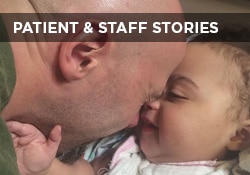This website uses cookies so that we can provide you with the best user experience possible. Cookie information is stored in your browser and performs functions such as recognising you when you return to our website and helping our team to understand which sections of the website you find most interesting and useful.

Susan E. Mazer, Ph.D. Blog
Thoughts and ideas on healthcare
Hi, and welcome to my blog! I'm Susan E. Mazer -- a knowledge expert and thought leader on how the environment of care impacts the patient experience. Topics I write about include safety, satisfaction, hospital noise, nursing, care at the bedside, and much more.
What Do We Know About Music and Music Therapy for the Sick and Tense?
June 9, 2017
 Music has been used therapeutically for thousands of years.
Music has been used therapeutically for thousands of years.
From David playing the harp for Saul to Aristotle and Plato declaring that no state leader is healthy without music, we have found that music adds an emotional and spiritual quality to our lives.
Today, we know even more about the potential for music to be used therapeutically.
Neurologic Music Therapy
Michael H. Thaut, Ph.D., is Professor of Music with cross appointments in Neuroscience and Rehabilitation Sciences at the University of Toronto where he directs the Music and Health Research Collaboratory (MaHRC) and the Masters/Ph.D. programs in Music and Health Sciences. Using current technologies, including Functional MRI, Dr. Thaut has shown that the musical brain informs the non-musical brain.
His research and practices established the field of neurologic music therapy, which is based on stimulating music perception and production parts in the human brain and its effect on nonmusical and behavior functions.
Parkinson’s patients who have had gait challenges have been able to train with music therapists and resume normal walking. This is because we are biologically programmed to almost automatically tap our feet and snap our fingers to rhythms that inspire us.
Music to Care for the Whole Person
Another group doing great work with music is the Room 217 Foundation of Canada, a not-for-profit corporation and registered Canadian charity dedicated to caring for the whole person with music.
Room 217’s vision is to see music become an integral part of person-centered care, providing wellness, therapeutic benefit, improved quality of life, and meaning through all of life’s passages. Founded by Beverly Foster, Room 217 is working to see music used as an agent of care for vulnerable populations, delivered by all care providers regardless of their musical abilities or training.
Music Therapy
Music therapy is the clinical and evidence-based use of music interventions to accomplish individualized goals within a therapeutic relationship by a credentialed professional who has completed an approved music therapy program.
Note-able Music Therapy Services (NMT) in Reno, Nevada, provides music therapy to children and adults who may have a variety of developmental challenges. Founded by Manal Toppozada, its mission is to create lasting change in the lives of people of all abilities through music.
All of the programs offered by the NMT are grounded in the philosophy that participating in music – expressing oneself through making sound – is both liberating and empowering, particularly for those who traditionally have had no voice in our society.
NMT serves the Reno-Tahoe Area and has been awarded and acknowledged for its work. It uses both music performance and dance to engage children and adults.
Music as Environmental Design
Taking yet another path, I developed the concept of Music as Environmental Design, in which music is used to create an intentionally designed space to facilitate recovery and healing. It calls on the concept and power of the positive valence that points to the quality of goodness, hope, and a positive future.
While the use of musical preference has been consistent for therapy-patient interaction, using music as environmental design is challenging when many individuals with a wide array of preferences are together.
Music as environmental design expands the common use of background music from being an “add-on” or distraction to being a proactive component in an intentionally designed environment. It also takes into account the whole auditory environment, all of the time.
This practice considers all ambient components, both auditory and visual, to integrate seamlessly into the patient experience. Music selected is based on the common purpose for being in the room — a surgical waiting area or patient room, for example.
Music as Bookmarks for Life Events
In addition to the annals of music therapy research, there are the stories we each have about our relationships with particular pieces of music that have bookmarked profound events during our lives. Births, deaths, weddings, anniversaries, graduations — so many times, we find a song or symphony that expresses the deep meaning of life.
For that reason, it’s important to be aware that the music you might listen to at home or driving to work may not be appropriate for patients and families.
Music supports patients’ process of healing, especially those whose acuity is high enough that they may not have the capacity to choose. The music they may choose to listen to on a Friday night with a glass of wine may not be the best music to help them rest or recover.
Music appropriate to who we are and what is happening in real time is magic. For patients whose personal clock during an illness seems to slow time down, music offers a freedom from angst and fear. It is a tonic.
Not to dismiss the value of preference, but being hospitalized is a unique and stressful experience. Offering an alternative to commercial music that is separated by genres based a demographics of age, ethnicity, and more can be most helpful.
And, at this time, there are more ways to access music than ever before in history. The question, then, is what is effective for the purpose at hand, in real time, at this moment?
P.S. If you like this post, please do me a favor and share on LinkedIn, Twitter, Facebook, etc. Also to get automatic notices when a new post is published, please subscribe. No spam – just great content. Thanks!










